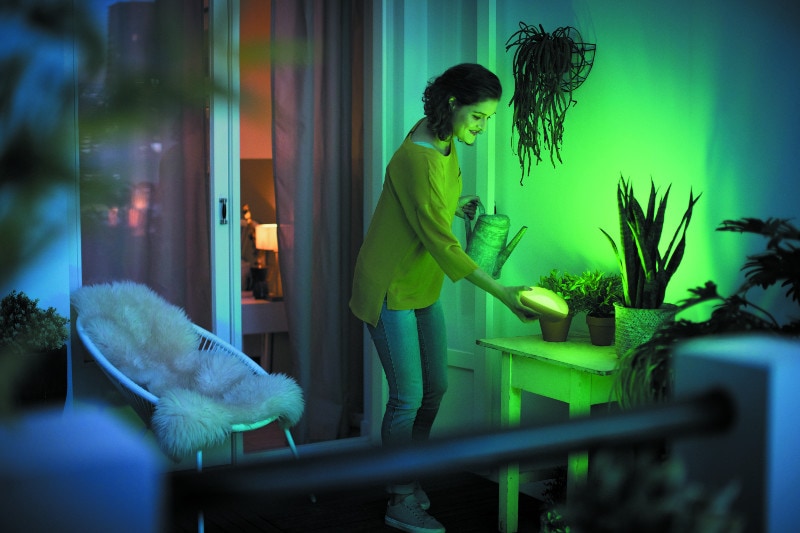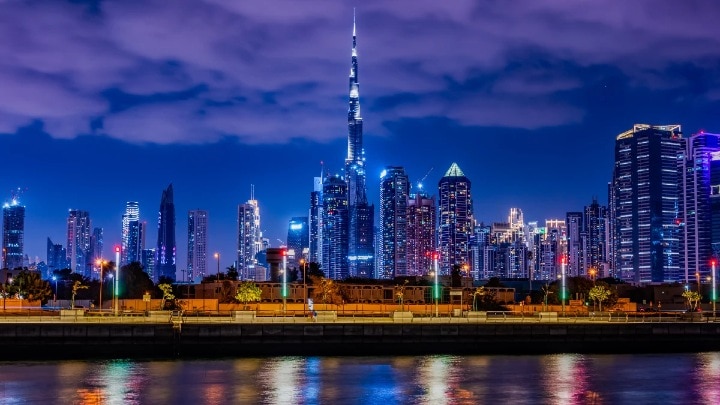November 10, 2021
We’re humbled for the recognition of UNFCC for our years of hard work on creating Brighter Lives and a Better World.
There are days where one can only feel humbled. Humbled for the appreciation and recognition of our company’s achievements after years of hard work. Yesterday was such a day.
During COP26 in Glasgow, the United Nations Framework Convention on Climate awarded Signify with a UN Global Climate Action Award for our leadership in climate action.
The members of the UN Global Climate Action Awards Advisory Panel, which is responsible for selecting the winning activities, said that they were particularly impressed by our Brighter Lives, Better World project.
They felt it serves as an excellent example of a large company not just pledging to work toward climate neutrality but actually delivering on it. They were also impressed by our integrated approach to climate action and found our activities to be truly transformative and innovative.
Yesterday, I had the privilege of accepting this award on behalf of the 37 thousand Signify employees around the globe who have created, innovated and pushed themselves and each other to lighten Signify’s environmental footprint and to enable greener solutions for our customers.
So, on behalf of the Signify team, I’d like to take a moment to reflect on how we got here. How can a 130-year old electronics company with an international manufacturing footprint go on to be recognised as a climate leader?

Let me take you back to 2015, which is when we committed to our 2020 goal to be carbon neutral and to convert to the use of 100% renewable electricity in all our operations. With a global manufacturing footprint and supply chain, nearly 40 thousand people, and offices in more than 70 countries, those commitments felt like a big step.
But we made it. And for those of your embarking on your own Race to Zero, here are some of the things we learned along the way.
We created integrated emission reductions efforts as growth drivers within our core business goals, ensuring that everything we did commercially also brought us closer to achieving our sustainability ambitions.
Examples of this include connected LED lighting, which on average saves 50% of the electricity consumed by conventional lighting, and which together with our Interact software platform, provides additional savings of 30% in offices, hotels and our city’s streets. Or 3D printed luminaires, which have a 75% lower carbon footprint than conventionally manufactured luminaires. And horticulture lighting, helping growers to grow more and higher quality crops, all year round, while using less electricity.
You can only make changes if you know what it is you need to change. We intensively analysed our operational energy use and made a comprehensive plan to improve our operational footprint, upgrading all lighting to our own energy-efficient lighting, installing more efficient HVAC systems, optimising our industrial processes and our office space utilisation, and switching to 100% renewable electricity. We also moved to more sustainable transport modes. Sea freight, for instance, emits 34 times less carbon dioxide than air freight. Together, these actions helped us to reduce our operational carbon footprint by more than 70% in the last ten years.
The use of 100% renewable electricity is an important pillar of our commitment to sustainability. We started our switch to renewables in strategic geographies with a relatively high electricity consumption and in countries with a more developed renewable electricity infrastructure. These were soon followed by other countries where we have a presence.
Today, 100% of our electricity comes from renewable sources.
Some level of emissions is unavoidable. While many companies offer carbon offset services, it was important to us that we find the right partner to ensure that what we do is credible and traceable.
We found this partner in South Pole, a specialist firm that helps us navigate options to find programmes that align with our corporate social responsibility programmes and meet our requirements to reduce our environmental impact, while also contributing to the wellbeing of the communities where these projects take place.
You can read more about our offsetting projects here: Carbon offsetting | Signify Company Website.
In addition to finding the right partners, we collaborate with organisations that share a similar vision. The Climate Group is a non-profit organisation that works with business and government leaders to tackle climate change. And we have also partnered with initiatives like the World Green Building Council’s (WGBC) Net Zero Carbon Buildings initiative.
Setting, and achieving, our targets was a big moment for Signify, and also a chance to reflect on and refresh our goals. In 2020, we announced that in the coming years, we will double our positive impact on the environment and society.
This Brighter Lives, Better World 2025 sustainability programme has four important pillars:
Signify (Euronext: LIGHT) is the world leader in lighting for professionals, consumers and the Internet of Things. Our Philips products, Interact systems and data-enabled services, deliver business value and transform life in homes, buildings and public spaces. In 2023, we had sales of EUR 6.7 billion, approximately 32,000 employees and a presence in over 70 countries. We unlock the extraordinary potential of light for brighter lives and a better world. We have been in the Dow Jones Sustainability World Index since our IPO for seven consecutive years and have achieved the EcoVadis Platinum rating for four consecutive years, placing Signify in the top one percent of companies assessed. News from Signify can be found in the Newsroom, on X, LinkedIn and Instagram. Information for investors is located on the Investor Relations page.


December 17, 2024
Transforming Dubai’s iconic buildings with connected lighting from Signify